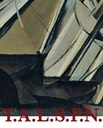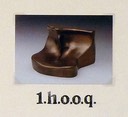The series Provocateur takes its cues from Marcel Duchamp’s assisted readymade L.H.O.O.Q. By the early 20th century, Leonardo DaVinci’s painting Mona Lisa had become a mass reproduced tourist icon. In 1919, Duchamp altered a commercial reproduction of Mona Lisa by adding a moustache and the letters L.H.O.O.Q. When pronounced in French, the letters sound like "Elle a chaud au cul" (she is hot in the arse). It is also close to "avoir chaud au cul", which Duchamp loosely translated to “there is fire below”. It is said that Duchamp, among other things, rescued DaVinci’s masterpiece from the banality of reproduction (although I am also interested in the mischievous wordplay and innuendo). Fast forward 100 years and it is Duchamp’s works that have become banal, mass reproduced pop culture images.
A Cheeky Tale also starts with postcard reproductions, but of Duchamp’s work. Beneath each image, a combination of letters has been printed. When pronounced, they create puns that are sexual euphemisms suggested by the accompanying image. These include “Ride the Unicycle”, “Chase the boys”, “Rotate her tires”, “Large ass”, A pole in the air”, and “tickle the nob”, among others. The series consists of four stanzas. Each stanza has six postcards with text, with repeats and variations in image and text from one stanza to the next. The final image ends where A Cheeky Tale began, with Duchamp’s pun, but accompanying a different and equally fitting work.
The larger works of Provocateur feature the popular Duchamp postcard images increased to poster size, along with the halftone dots of mass reproduction lithography, and letter/wordplay text at the bottom of each.
—Dan Mills, 2017



















